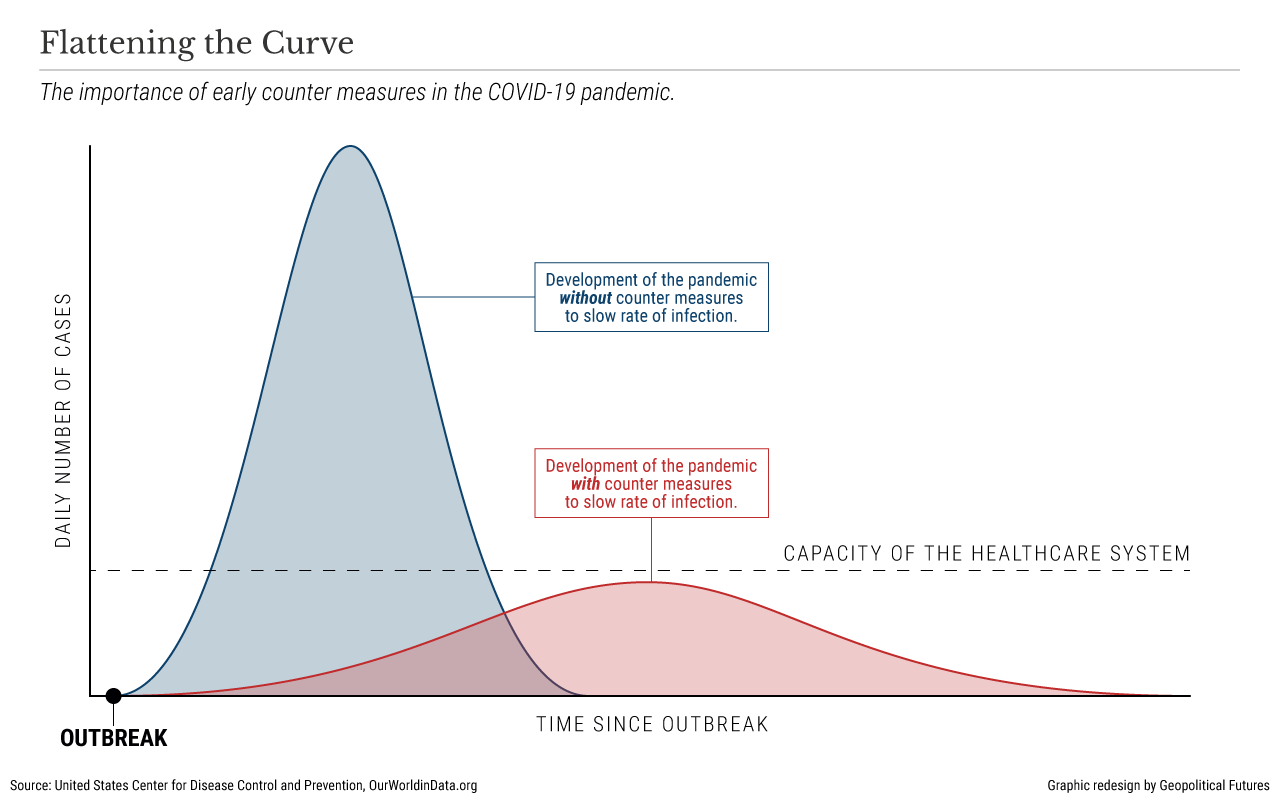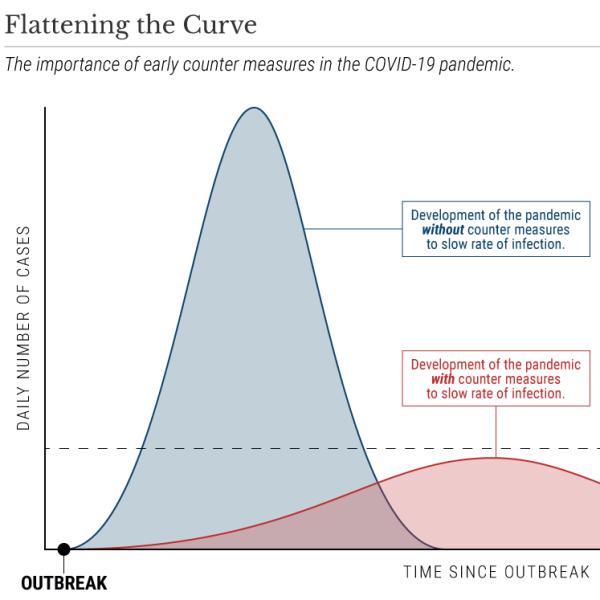This article was originally published at Geopolitical Futures. The original is here.
Extraordinary times call for extraordinary measures. At least two different countries, China and Italy, have turned this aphorism into an official government response to the coronavirus, issuing quarantines that cover millions of people and enforcing extraordinary lifestyle changes. But these kinds of measures can’t last forever. The public is willing to tolerate massive disruptions to daily life only when it believes the disruptions will end. When they don’t, economic and perhaps social unrest will ensue. That is why the question, “Should the coronavirus be contained at all costs?” is geopolitically relevant. Before we can answer that question, however, we must first answer if SARS-CoV-2 (the official name of the new coronavirus) is an extraordinary virus and if it’s even possible to contain it at this point.
SARS-CoV-2, and the disease it causes called COVID-19, is in some ways extraordinary. Four strains of coronavirus are among the 200 causes of the common cold. But they aren’t typically lethal. The other two coronaviruses, SARS (severe acute respiratory syndrome) and MERS (Middle East respiratory syndrome), had very high case-fatality rates but infected far fewer people. For these reasons, SARS-CoV-2 is like a deadly version of the common cold and, thus, unlike any other coronavirus we’ve seen.
Moreover, it’s not acting like typical respiratory viruses, which can hit young children and the elderly especially hard. Instead, SARS-CoV-2 has minimal impact on children (though it can still infect them, and children can spread it to others). Bizarrely for a respiratory virus, it has been detected in stool samples, indicating possible fecal-oral transmission. Though the entire human population should be immunologically susceptible, the virus is not spreading as quickly as influenza. Flu season lasts from October to March. In that five-month timespan, influenza will infect anywhere from 9 million to 45 million Americans each year. COVID-19 does not appear to be on that track, especially with summer approaching. (Warm weather is often lethal to respiratory viruses.) In the roughly two months the virus has been circulating in America, the number of confirmed cases is only roughly 3,700. Even if off by a factor of 100, the number of infections is two orders of magnitude less than the flu. The bottom line is that scientists don’t really know how the virus is spread.
Can this extraordinary virus be contained? Probably not. The biological and epidemiological features of the virus make that nearly impossible. Research indicates that the virus is most contagious at the earliest point of illness, which means that a person is already spreading it by the time symptoms first appear. Once a person feels poorly enough to stay home, it’s already too late. Even worse, people who are infected but asymptomatic can probably spread the virus as well. The World Health Organization estimates that 80 percent of COVID-19 cases are mild or asymptomatic, underscoring the likely futility of containment measures. The only way to stop a virus that can spread so surreptitiously is to force every person on Earth to stay home for the next 14 days, which is the length of time necessary for quarantine, based on the virus’ incubation period.
Public officials are faced with few options to protect the population. On one extreme is “do nothing.” This would result in the virus spreading far and wide and is therefore not a politically or socially viable option. On the other extreme is “cancel everything.” This certainly would prevent new cases. However, while health concerns and fears of a new virus might allow for this to be socially acceptable for a while, it cannot last indefinitely. People might accept economic devastation as a necessary consequence to stop smallpox, a disease that killed 30 percent of the people it infected, but COVID-19 is not nearly so lethal. The greatest threat is to people aged 60 and over or those with underlying health conditions. The rest of us are concerned about them. But people are also rightly concerned about their wages and bank and retirement accounts and may decide that life needs to return to normal.
With that in mind, there are two general approaches that can be taken when faced with an emerging infectious disease: containment or mitigation. The former seeks to prevent the virus from spreading and to ultimately snuff out the pandemic. It is a viable and potentially successful approach for diseases such as Ebola that are relatively difficult to transmit and create patients with unmistakable symptoms. Mitigation acknowledges that the virus cannot be stopped and seeks ways to minimize its impact on public health. This strategy is used when containment is not viable.

Mitigation countermeasures are an important component of “flattening the epidemic curve.” The goal isn’t necessarily to reduce the number of total infections, though that would be a pleasant side effect. Instead, the goal is to buy time: slowing down the spread of the disease so that the health care system is not overloaded with patients, as it was in Wuhan. After all, a sick patient can only benefit from medical care if there are enough hospital beds and supplies. This, in turn, lowers the case-fatality rate.
Considering the biological and epidemiological features of the virus described above, combined with more than 150,000 confirmed cases – not to mention the several hundred thousand more cases that are undiagnosed – the notion that the virus is still containable seems far-fetched. The U.S. decision to ban flights from Europe is a containment tactic that will yield few practical results because the virus is already circulating in the United States. And there are still other international flights entering the U.S. that Europeans could use to gain entry. Given the spread of the virus to date, the economic hits incurred thus far, and all the other unknown factors regarding the nature of the virus, mitigation emerges as the most viable course of action that allows for an appropriate balance between public health and economic needs.
© 2020 Geopolitical Futures. Republished with permission.




